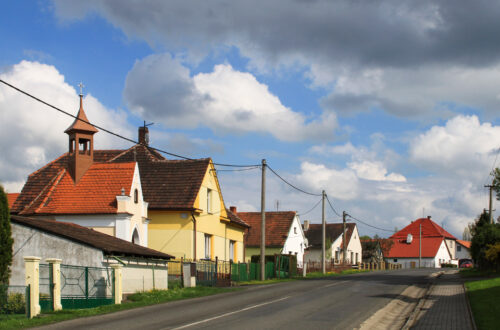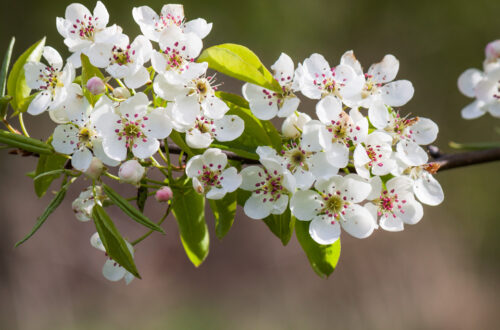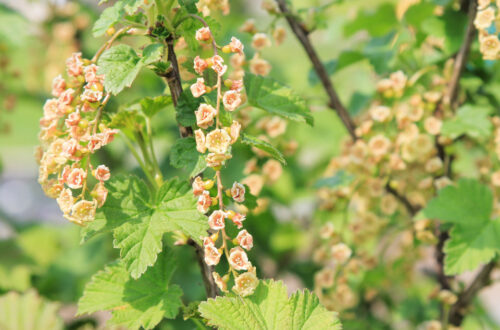Rock garden rebuilding
Wherever you dig in our garden, you most probably hit a stone. There are so many of them hidden beneath the surface that after each building work in the garden we get a new heap of stones of all sizes. What can you do with all of them? You can either use them or throw them away but you can’t simply dump them into a bin or somewhere, they are heavy and too many. No wonder then that one of our ideas for using the superfluous stones was to build a rock garden and place many of them there, so about 14 years ago my husband and I created our first rock garden.
We agreed on the shape and arrangement, he helped me to build it as there was much heavy work, and I planned and planted the flowers. That rock garden looked great. I loved the stones decorating the flowers and the little islands of different colours and shapes, a sight to behold.
Though throughout the following years, the rock garden gradually lost its appeal and we realized we’d made several mistakes we should have avoided:
- We didn’t lay good enough foundations – the rock garden was heavy and gradually sank until it became quite flat
- We framed the outer shape with a gardening plastic edge but it wasn’t sturdy enough and gradually disintegrated which made it more difficult to keep the flowers inside and the grass and weeds outside
- Although we placed a pile of stones in the middle part of the rock garden (my husband called that aptly a “stone sea”), the other stones, thought they seemed quite big originally, became covered by the spreading flowers and disappeared under them
- There were too many varieties of the flowers fighting for space and intermingling uncontrollably
- I underestimated the will of some of the flowers to grow and spread themselves, they suffocated the less aggressive varieties, which disappeared as well
After just 7 years the rock garden looked much less neat and lost some of its inner order. Of course, that does not necessarily have to be a negative thing, but here I didn’t like it. The magic was gone.
I should have paid more attention to the look and condition of the rock garden but you know how slow creeping changes leave their ugly traces and at the same time go almost unnoticed? We are experts at turning a blind eye to the things we don’t want to see.
In the following 4 years the rock garden utterly deteriorated and became a pitiful sight indeed. That was the last straw to face it so when we were forced to stay at home during the first spring Corona crisis, I decided there will be no better time to take the bull by the horns and in April I started rebuilding the rock garden.
Step No. 1: The first step was to take out all the flowers. I decided to use them if they survive or start with new ones if they don’t, it didn’t really matter, though I wanted to give the remaining ones a fair chance to stay. We took a long strip of non-woven fabric, put it next to the rock garden and I was placing there all the flowers I removed from the rock garden in clumps with earth covering their roots to protect them and keep them alive. I hoped that when I put the plants close to one another, they will help one another survive.
Along with the flowers I was removing also the stones laid out among and under the flowers, see in the photos below how many there were? All of them from our garden, and we have more… Much more. My husband and son helped me to move the biggest ones, they were too heavy for me to handle them.
Step No. 2: When all the flowers and stones were out, my husband removed a few more inches of the earth. Simultaneously he was removing the remaining stones, weeds and roots from the earth and collected the cleaned earth aside.
As you can see in the photo below, the flowers placed on the right side didn’t look great. The weather was quite dry and warm and because we didn’t have nearly enough water in our well, I couldn’t waste it on watering the garden. Of course, I could have put the flowers into pots but that was not worth the time and effort.
Step No. 3: We liked the shape of the rock garden so we left it overall as it was. We covered the bottom with sheets of non-woven fabric, enclosed the shape with concrete tiles for better maintenance and a thick rubber strip between the tiles and stones inside for keeping the outside grass and weeds at bay.
When all this was done, we started refilling the site with the smaller stones until the whole surface was covered with them. The foundation was laid.
Step No. 4: Adding sand was the next step intended to create a permeable layer under the finishing level of earth. I wouldn’t have believed how much sand and stones the space swallowed… Below the sand there are almost all of the stones you could see outside the site in the photo above.
In the meantime the weather “improved”, it started to rain and the garden appreciated that. If you look here at the flowers next to the rock garden, you can see how they changed, they did survive the worst period.
Step No. 5: Now the big stones. I was thinking about the final look of the rock garden and came up with a different disposition than before. We used the remaining biggest stones and even had to bring more stones from another heap in the garden and arranged them so that in the middle they form a spine and the other stones are piled to create enclosed spaces.
Step No. 6: Time to plan the planting… The little fields we created had different sizes and I wanted to assign them to the right varieties. First I took a photo of the almost finished rock garden. Because of the dimensions of the site I could not take any decent from-above photo where the sizes would be depicted genuinely, so I took that disproportional photo below, went around the rock garden and noted how I approximately divided the fields into 4 categories according to their size. Then I created a simple visualization in Photoshop to have the arrangement clearly in front of my eyes.
I also took simple photos of all the rock-garden flowers I had, decided where each of them would be most happy to grow and again created a simple visualization by adding the particular flowers to the particular fields. My intention was to place just one variety in each and every field. The flowers are actually quite small compared to the fields so the visualisation looks somewhat funny but it served its purpose. I printed it on a sheet of paper and it helped me enormously during the planting.
Step No. 7-8: The next-to-last step was adding the cleaned earth to the individual fields. Then I took little parts from all the flowers, as weedless as possible, and planted them into the earth. That was it, the garden was finished.
It took us three months of effort and hard work to finish the rebuilding and I love the result. All the flowers have been thriving and I’m firmly determined to oversee their well-being and spreading. I’m not going to rebuild the rock garden any time soon, or rather any time ever…
There are many different (and sometimes contradicting) instructions on how to build a rock garden and I’m sure that we all have a different conception of how a(n) (ideal) rock garden should look but hopefully this story might be some inspiration for you to create, build and grow. Nothing is so neglected that it could not be rebuilt…

















